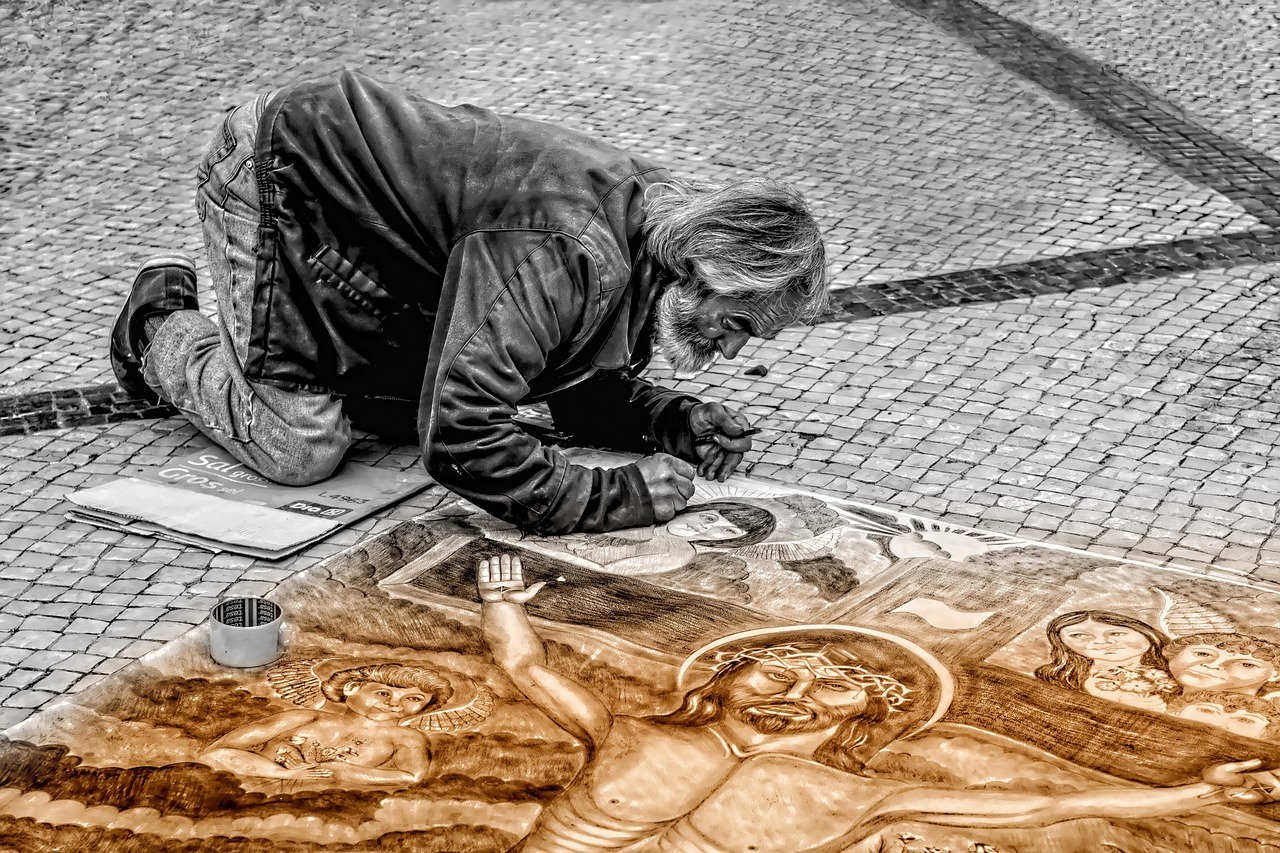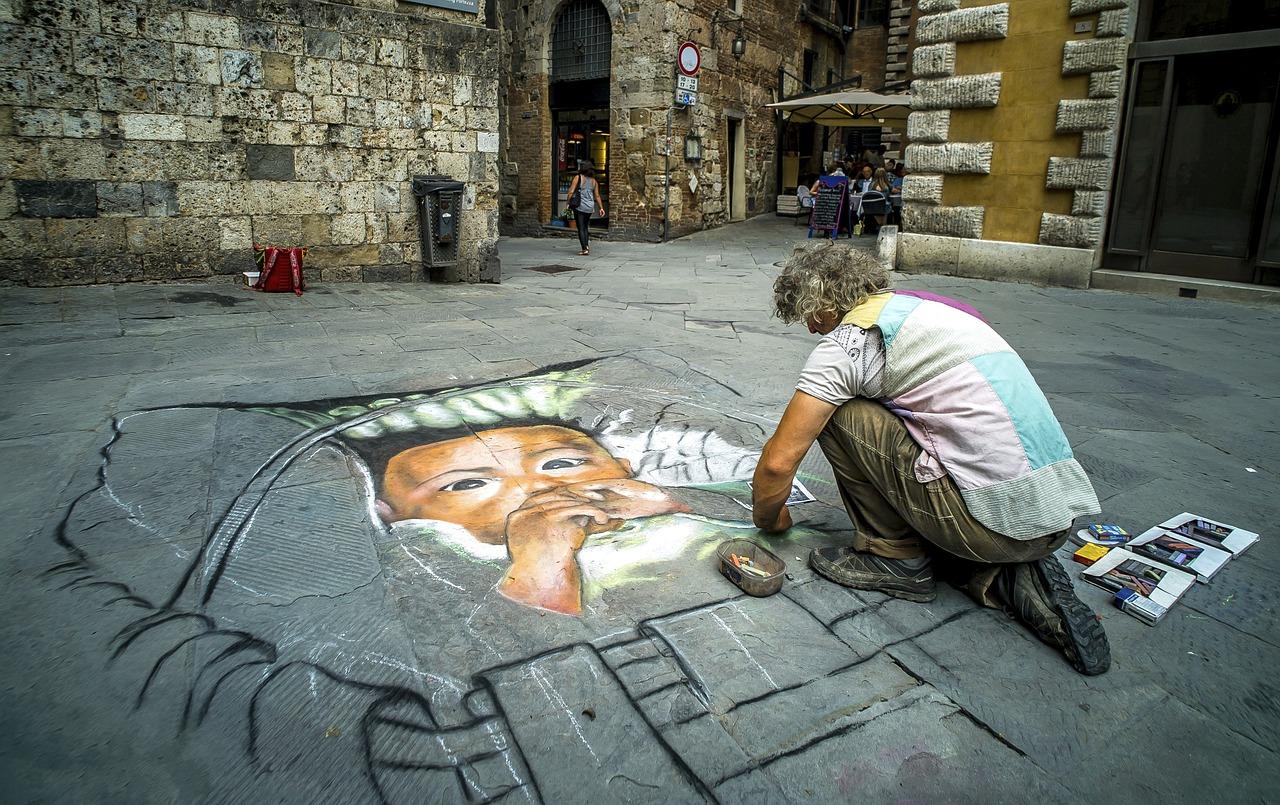The Power of Transformation in Art
The act of transforming ordinary objects into extraordinary works of art has been a powerful force in the art world, challenging our perceptions and redefining the boundaries of creativity. This artistic practice invites viewers to see the world through a different lens, finding beauty and meaning in the mundane.
Historical Context
The use of everyday objects in art has a rich history, with roots tracing back to the early 20th century. This approach to art-making gained significant traction with the rise of the Dada movement and the concept of the readymade.
| Year | Artist | Artwork | Significance |
|---|---|---|---|
| 1913 | Marcel Duchamp | “Bicycle Wheel” | First readymade, combining a bicycle wheel and a stool |
| 1917 | Marcel Duchamp | “Fountain” | Controversial use of a urinal as art, challenging definitions of art |
| 1936 | Meret Oppenheim | “Object (Le Déjeuner en fourrure)” | Fur-covered teacup, saucer, and spoon; surrealist transformation |
| 1964 | Claes Oldenburg | “Floor Burger” | Giant soft sculpture of a hamburger, pop art icon |
| 1988 | Jeff Koons | “Michael Jackson and Bubbles” | Porcelain sculpture elevating pop culture to high art |
Marcel Duchamp’s infamous “Fountain” (1917) stands as a watershed moment in this context. By submitting a standard urinal as an artwork for exhibition, Duchamp challenged the very definition of art, paving the way for future artists to explore the artistic potential of everyday objects.
Modern Interpretations
Contemporary artists continue to push the boundaries of transformative art, using increasingly diverse materials and techniques to create thought-provoking works:
- Tara Donovan – Creates large-scale installations using common items like plastic cups and paper plates
- Subodh Gupta – Transforms Indian kitchen utensils into monumental sculptures
- Chiharu Shiota – Weaves intricate installations using everyday objects and thread
- Ai Weiwei – Repurposes artifacts and common objects in politically charged works
- Nils Völker – Creates kinetic sculptures from plastic bags and other disposable items
These artists demonstrate that the potential for transformation exists in even the most seemingly mundane objects, challenging us to reconsider our relationship with the material world around us.
Prominent Artists and Their Works

Günther Uecker
German artist Günther Uecker is renowned for his innovative use of nails in creating mesmerizing, abstract works. His signature technique involves hammering nails into canvas or wooden panels, creating dynamic fields of light and shadow.
Uecker’s seminal work “White Field” (1964) exemplifies his mastery of this technique. Consisting of thousands of nails hammered into a white-painted canvas, the piece creates a hypnotic, undulating surface that seems to shift as the viewer moves around it. The work challenges traditional notions of painting and sculpture, existing in a liminal space between the two mediums.
Other notable works by Uecker include:
- “New York Dancer” (1965)
- “Spirale” (1969)
- “Sonnenuhr” (Sun Dial) (1996)
Uecker’s art invites viewers to reconsider the artistic potential of common hardware store items, transforming utilitarian nails into tools for creating ethereal, almost mystical visual experiences.
El Anatsui
Ghanaian artist El Anatsui has gained international acclaim for his innovative use of discarded materials, particularly bottle caps and metal scraps, to create monumental sculptural works.
| Artwork | Year | Materials | Exhibition Venue |
|---|---|---|---|
| “Fresh and Fading Memories” | 2007 | Bottle caps, copper wire | Venice Biennale |
| “Broken Bridge II” | 2012-2013 | Pressed tin and mirrors | High Line, New York |
| “Gravity and Grace” | 2013 | Aluminum and copper wire | Brooklyn Museum |
| “Tsiatsia – Searching for Connection” | 2013 | Aluminum and copper wire | Royal Academy of Arts, London |
Anatsui’s works are notable for their scale and flexibility. His large-scale “sheet” sculptures, composed of thousands of flattened bottle caps linked together with copper wire, can be draped and arranged in various configurations, allowing for a unique presentation in each exhibition space.
These shimmering, tapestry-like works not only transform humble materials into objects of beauty but also carry deeper meanings related to consumerism, cultural exchange, and the environment.
Francesca Pasquali
Italian artist Francesca Pasquali is known for her innovative use of plastic straws and other synthetic materials to create organic, often biomorphic sculptures. Her work challenges our perception of artificial materials by using them to mimic natural forms and textures.
Some of Pasquali’s notable works include:
- “Frappa” series – Undulating wall sculptures made from densely packed plastic straws
- “Spider” installations – Large-scale works resembling spider webs, created from plastic tubes and ties
- “Nidi” (Nests) – Nest-like structures made from coiled plastic materials
Pasquali’s art invites viewers to reconsider their relationship with plastic, a ubiquitous material often associated with environmental concerns. By transforming these synthetic materials into forms reminiscent of natural phenomena, she creates a dialogue between the artificial and the organic.
Techniques and Materials
Found Object Assemblage
Found object assemblage is a technique where artists collect and combine discarded or readymade objects to create new artworks. This approach, rooted in the traditions of Dada and Surrealism, continues to be a powerful method for transforming everyday objects into art.
Common tools and materials used in assemblage art include:
- Adhesives (epoxy, glue guns, silicone)
- Fasteners (screws, nails, wire)
- Cutting tools (saws, scissors, craft knives)
- Paint and other surface treatments
- Found objects (toys, machine parts, household items)
- Natural materials (wood, stones, shells)
Artists like Joseph Cornell, known for his poetic box constructions, and contemporary assemblage artists like Betye Saar demonstrate the enduring appeal of this technique in transforming ordinary objects into extraordinary art.
Upcycling and Sustainability
The transformation of everyday objects into art often intersects with concepts of upcycling and sustainability. Many artists are drawn to this practice not only for its creative potential but also for its environmental benefits.
Artists focusing on sustainability in their work include:
- Aurora Robson – Creates sculptures and installations from plastic debris
- Nick Gentry – Paints portraits on obsolete tech items like floppy disks and film negatives
- Veronika Richterová – Transforms PET bottles into intricate sculptures of plants and animals
- Michelle Reader – Builds figurative sculptures from household waste
These artists not only create visually striking works but also raise awareness about waste and consumption, encouraging viewers to reconsider their relationship with everyday objects and materials.
Case Studies: Innovative Artworks

David Foster’s Nail Portraits
British artist David Foster has gained recognition for his unique portraits created entirely from nails. His technique involves hammering thousands of nails into a wooden board, varying the nail height to create tonal gradations and form recognizable images.
Foster’s process:
- Sketching the portrait on the wooden base
- Pre-drilling holes to guide nail placement
- Carefully hammering nails to different heights
- Adjusting nail positions for fine details
- Applying a finish to protect the work
His portraits, often depicting iconic figures like Albert Einstein or John Lennon, demonstrate the extraordinary potential of a simple hardware store item to create complex, nuanced artworks.
Michael Mapes’ Object Collages
American artist Michael Mapes creates intricate collages inspired by Dutch master paintings, using an array of tiny objects to reconstruct these classic images. His work transforms the concept of portraiture through a scientific, almost forensic approach.
Materials used in Mapes’ collages include:
- Photographic fragments
- Insect pins
- Gelatin capsules
- Glass vials
- Dried botanical specimens
- Hair samples
- Fabric swatches
Mapes’ process involves meticulously arranging these objects in specimen boxes, creating a fragmented yet recognizable version of the original painting. This approach not only transforms everyday objects into art but also invites viewers to reconsider the nature of identity and representation.
The Impact on Contemporary Art
Audience Engagement
Art created from transformed everyday objects often offers unique opportunities for audience engagement. The familiarity of the materials can create an immediate connection, while their unexpected use challenges viewers to see these objects in a new light.
Interactive elements in these artworks can include:
- Touchable surfaces (e.g., Felix Gonzalez-Torres’ candy spills)
- Movable components (e.g., Olafur Eliasson’s “The Weather Project”)
- Participatory installations (e.g., Yayoi Kusama’s “Obliteration Room”)
These interactive aspects blur the line between viewer and artwork, creating immersive experiences that go beyond traditional art viewing.
Cultural Commentary
Many artists who transform everyday objects into art use this practice as a form of cultural commentary. By repurposing familiar items, they can address issues of consumerism, identity, and societal values in accessible yet profound ways.
For example, Brian Jungen’s transformation of Nike Air Jordan sneakers into First Nations-style masks comments on the intersection of indigenous culture and global consumerism. Similarly, Meschac Gaba’s “Museum of Contemporary African Art” uses everyday objects to challenge Western perceptions of African art and culture.
These works demonstrate how the transformation of ordinary objects can serve as a powerful tool for social critique and cultural reflection.
The practice of transforming everyday objects into art continues to evolve, pushing the boundaries of creativity and challenging our perceptions of the world around us. From Duchamp’s readymades to contemporary installations, this approach to art-making invites us to see the extraordinary in the ordinary, fostering new ways of thinking about art, culture, and our material world.